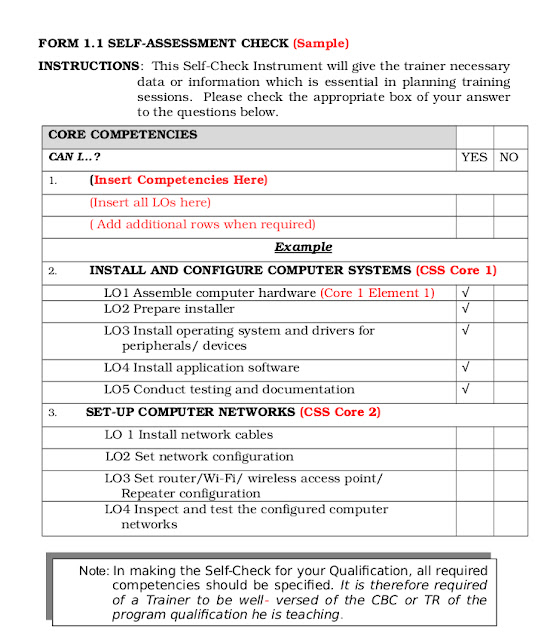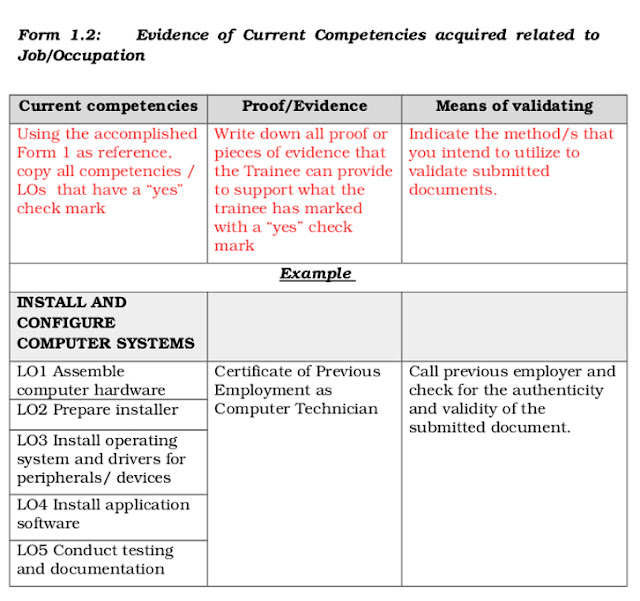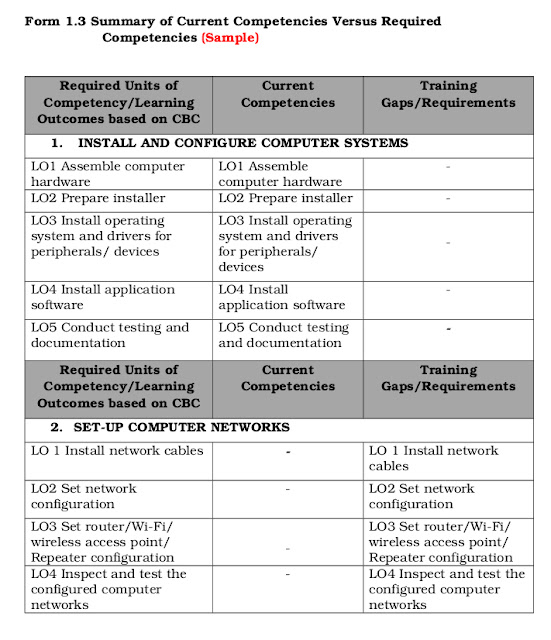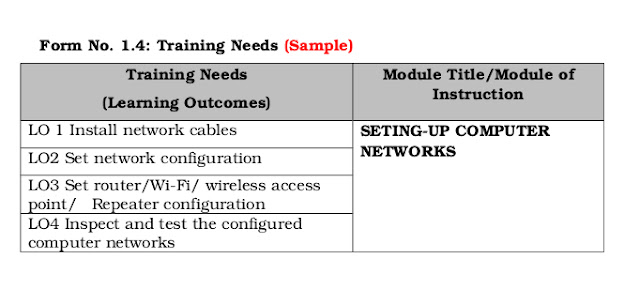Training Needs Analysis
In my past blog tutorial, I had discussed the reason why a TVET Trainer needs to gather a Trainee's characteristics. For this second Plan Training Session requirement, you as a Trainers Methodology Level 1 (TM-1) trainee is required to develop and prepare Training Needs Analysis (TNA) Forms following a suggested format.Tutorial Requirements:
- A Copy of the Plan Training Session-Competency Based Learning Materials (PTS-CBLM) released by the National TVET Trainers Academy (NTTA), which will serve as our primary source of information; and
- a copy of the TNA Forms that you can download individually here, or should you chose, you can download the entire PTS Zip file at the template section of this blog.
Introduction
The Plan Training Session-Competency Based Learning Material (PTS-CBLM) on page 56 states the importance of Knowing the training needs of a prospective trainee, it states that,
"Trainee’s training needs is another important data that you need to collect as a trainer so that you will be able to identify the skills and competencies needed by individual trainees. In CBT, competencies or skills that are already previously acquired by the trainee will no longer be repeated in their learning activities."
- PTS CBLM page 56, emphasis mine
One of the 10 CBT principles as discussed from pages 8-10 of the PTS-CBLM is that the CBT System "allows Recognition of Prior Learning (RPL)."
The PTS-CBLM Offering an explanation also states that,
"CBT focuses on the competencies that are not yet acquired by the trainee in any learning situation. Competencies acquired as a result of previous training, employment and life experiences should be recognized so that trainees will not waste time doing the learning activities of the competencies that they already have. It is one of your task to identify these prior learning of your trainees and plan for the training of each trainee based on this data."
"CBT focuses on the competencies that are not yet acquired by the trainee in any learning situation. Competencies acquired as a result of previous training, employment and life experiences should be recognized so that trainees will not waste time doing the learning activities of the competencies that they already have. It is one of your task to identify these prior learning of your trainees and plan for the training of each trainee based on this data."
- PTS-CBLM page 10, emphasis mine
aside from this it also hinted that it is the task of the Technical-Vocational Education and Training (TVET) Trainer to identify these prior learning/s of a prospective trainee, and then use this information in planning the training program.
The suggested tool to perform this task is through the development and utilization of a TNA tool that would identify what the prospective Trainee already knows through his/her life long learning experiences.
Going to the true gist of this blog, allow me to give you some advise on how to use the suggested TNA forms as explained by PTS-CBLM, under INFORMATION SHEET 1.1-6, of the Trainees’ Current Competencies. (pages 56-67)
TNA Form 1 - for this form, using the TR or the CBC as reference you are required to encode all the required competencies of your respective qualification, from Basic to Core Competencies and its corresponding Learning Outcomes (LO)s as shown in figure 1.
 |
| Figure 1. TNA Form 1 |
TNA Form 2 - for this form, using Form 1 as reference, copy all competencies and Learning Outcomes marked as yes by the prospective Trainee in Column 1. In column 2, indicate the submitted documents or proof by the prospective Trainee, while in column 3, indicate the methods that you intend to use in validating the submitted documents. Figure 2.
Pages 57-59 of the PTS-CBLM, provide more details in regards to the type of proof or evidence that can be submitted by the prospective candidate and the different ways of validation.
TNA Form 3 - This form is utilized to match up the validated current competencies of the prospective candidate, against competencies that the candidate do not know yet and needs to know, based on the accomplished form 1 and validated competencies of form 2. Figure 3.
TNA Form 4 - using form 3 as reference and utilizing the gap that came out after the comparison, you can now determine the needed competencies that the prospective candidate needs to learn during his/her training.
I hope this brief discussion in how to utilize the suggested TNA Forms helps. The provided examples were self explanatory, but should you have any questions, do not hesitate to post your question/s in the comment below.
Cheers!



No comments:
Post a Comment